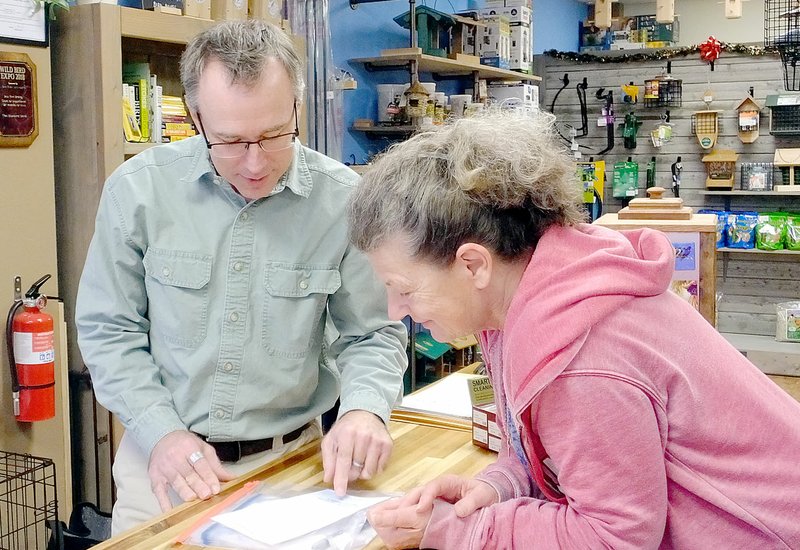Scattered around Bella Vista, wooden boxes on poles are part of an ongoing project to help the eastern bluebird. According to their webpage, http://bvbluebirds.com, members of the Bella Vista Bluebird Society have placed more than 500 bluebird boxes and fledged more than 47,0o0 birds since they started the project in 1980. It seems like the logical place to do some research on bluebirds.
Keith Ihms, director of golf maintenance for the Bella Vista POA, told members of the golf committee about the project to study bluebirds that use the boxes on Bella Vista golf courses, including the boxes on the closed course -- Berksdale.
Comparing habitat like the closed course vs. the open courses is just one of the functions of the project, Butch Tetzlaff, owner of the Bluebird Shed and collaborator on the study, said. There's a lot to find out about bluebirds.
Some bluebirds migrate and some are year-round residents, he said, but, so far, no one knows how many move around or why they move around. In the wintertime, there are northern birds who migrate to Bella Vista from places like Minnesota, but there are also birds that spend the summer here and then move on to southern locations. No one knows how many stay behind or why.
Bluebirds can have more than one set of offspring each summer. The early set moves out of its parents' nest and finds its own territory, Tetzlaff said, but the later set may stay in the family group. Some bluebird boxes will host the entire family over the winter. It may be that the birds need to stay together for warmth, he said.
The resident bluebirds may have an advantage come spring. They may be able to claim their territory before the migrants return, but no one knows for sure.
The study has several parts. Tetlaff and Jen Mortensen, Ph.D., from the U of A will capture some bluebirds and test tiny sections of their wings and claws. Those birds will be fitted with bands before they are released. The tests should be able to determine where the bird was living when the feathers grew in. It may not be possible to identify an exact location, but Tetzlaff believes they will be able to narrow it down to a broad area.
Local birders will be drafted to help. Almost half of the boxes in Bella Vista have winter residents, Tetzlaff said, but they aren't all bluebirds. He's asking homeowners to watch their boxes over the winter. He provides coffee filters to line the bottom of the box. The homeowner is asked to collect the filter and return it on a regular basis. Testing will determine if it's a bird or a small rodent that is taking up residence in the box.
Linda Oliphant picked up her set of filters last week.
"I'm excited," she said about helping out with the study. She was never a bird watcher until she moved to Bella Vista but, once settled, she started to notice the creatures that inhabit her backyard. The neighbors told her that Tetzlaff could answer her questions and she's since become a regular customer at the Bluebird Shed.
Bird Identification 101
The Bluebird Shed’s Butch Tetzlaff will hold a class on identifying birds at Concordia Retirement Center at 1 p.m. on Saturday, Dec. 7.
General News on 12/04/2019

